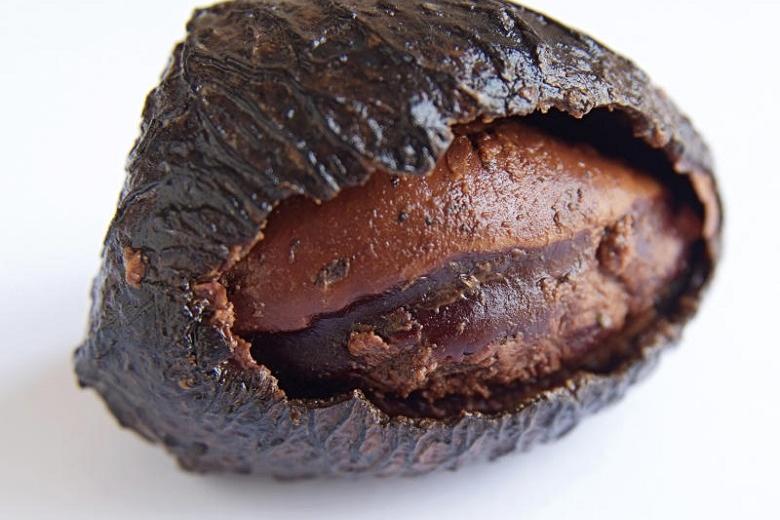(THE STAR/ASIA NEWS NETWORK) - The kepayang "fruit" or buah keluak is actually the seed of the kepayang tree and has a rich history.
Used to make nasi kebuli, a royal dish served to ancient Pahang royalty, it now has a place in Malaysian dishes such as the Peranakan speciality, asam pedas keluak.
Most kepayang trees are found in Pahang, but the village most famed for kepayang production is Kampung Pagi in Pahang. Unfortunately, there is only one tree left there.
"We used to have a lot of trees, but they died in the floods," said village elder Abdul Jamil.
While they have lost most of their trees, they still retain one precious asset: kepayang trader Sarifah Aminah, 65, who still works to harvest, cure and sell kepayang fruits.
She is especially important because kepayang fruits are tricky little things. The raw seed contains cyanide and is deadly poisonous. Locals know that they could cause illness, or what they term "mabuk" or drunkenness. If the villagers' chickens accidentally eat uncured kepayang, they die.
That is why Ms Sarifah's skills are invaluable.
If properly cured, however, they are culinary miracles. But kepayang curing - which involves boiling, immersion in ash and burial in the ground for an extended period - is a dying art and unless someone steps up to do something, Malaysia might soon have to wholly depend on the next big kepayang exporter, Indonesia.
"I'm one of the few people left who know how to prepare kepayang properly," said Ms Sarifah. "The others are old and the young know only how to eat kepayang, not prepare it."
It is a worrying thought. While Ms Sarifah has taken efforts to pass her knowledge down to her daughter, not many others have done the same, and she worries that eventually her beloved buah kepayang will disappear from Malaysia's culinary heritage.
"My grandma knew how to make nasi kebuli. She would press oil out of the fruit and use it to prepare the rice," she said. "I never learnt and now the recipe is lost. I worry the same thing will happen to kepayang preparation."

